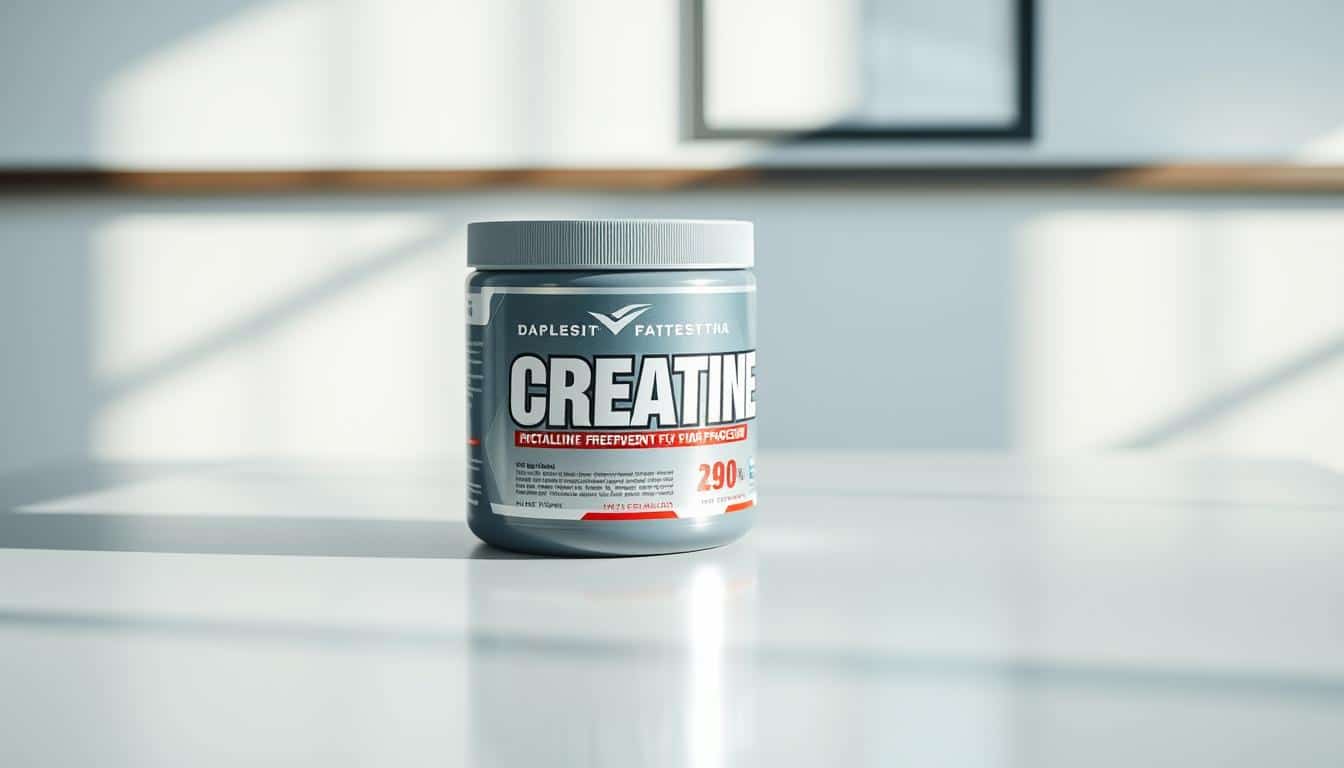Ever wonder how athletes power through intense workouts or build explosive strength? The secret might be simpler than you think. Creatine, a naturally occurring compound, fuels your muscles during high-intensity activities like weightlifting and sprinting. It’s stored in your skeletal muscles, where it helps generate quick bursts of energy.
Available as powders, tablets, or even energy bars, it’s an easy addition to your routine. Plus, it’s safe for most athletes and approved by major sports organizations. If you’re looking to boost muscle growth, increase strength, or even prevent injuries, this might be the game-changer you need.
What Is Creatine?
Curious about what fuels your muscles during high-intensity workouts? It’s a natural compound called creatine monohydrate. Your body produces about half of it in the liver and kidneys, while the rest comes from your diet. Think red meat, fish, and milk—foods packed with this energy booster.

For example, an 8oz steak gives you roughly 1g of creatine. If you’re vegetarian, you might need to consider supplements since plant-based diets are lower in this compound. But don’t worry—your body stores most of it in your skeletal muscles, ready to power your next workout.
Here’s the breakdown: 95% of creatine is stored in your muscles, while the remaining 5% supports your brain and heart. Unlike whey protein, which helps build tissue, creatine fuels quick energy bursts. It’s like your body’s built-in turbocharger for high-intensity activities.
How Creatine Works
Want to know what keeps your energy levels high during intense workouts? It all comes down to a process involving phosphocreatine and ATP. Think of it like a battery recharge for your muscles. When you’re lifting heavy or sprinting, your body uses ATP for quick energy. But ATP runs out fast—this is where phosphocreatine steps in.
Phosphocreatine acts like an emergency generator. It helps regenerate ATP, giving you that extra power for explosive movements. This process is especially crucial during short, high-intensity activities like a 6-second sprint or a heavy bench press. Studies show it can increase cellular energy by 15-40%, making a noticeable difference in your exercise performance.
For example, research found a 22% boost in anaerobic capacity after just 5 days of loading. This means you can push harder and recover faster. It’s not just about strength—it’s about endurance and efficiency too. So, whether you’re aiming for a new 1RM or just want to power through your workout, understanding this process can help you maximize your gains.
Creatine Supplementation Guidelines
Ready to take your training to the next level? Let’s break it down. To maximize the benefits, there are two key phases: the loading phase and the maintenance phase. These steps ensure your muscles are fully saturated and ready to perform at their best.
Loading Phase
Think of the loading phase as filling your gas tank fast. For the first 5-7 days, aim for 20-25g per day. This can be split into four doses of 5g each, taken with meals. For example, a 176lb athlete would need about 24g per day based on the 0.3g/kg body weight formula.
Maintenance Phase
After the loading phase, switch to a maintenance dosage of 3-5g per day. This keeps your levels optimal. A great tip is to add it to your post-workout shake for consistency. Full saturation takes about 7 days with loading, compared to 28 days without it.
| Phase | Duration | Daily Dosage |
|---|---|---|
| Loading | 5-7 days | 20-25g |
| Maintenance | Ongoing | 3-5g |
For more tips on optimizing your nutrition, check out our guide on top supplements for athletes. Stick to this plan, and you’ll see results in just a few weeks!
Benefits of Creatine Supplementation
Looking to take your athletic performance to new heights? Creatine offers a range of benefits that can help you achieve your goals. From building lean muscle to improving strength and endurance, it’s a game-changer for athletes of all levels.
Increased Muscle Mass
One of the most noticeable benefits is the ability to increase muscle mass. Research shows that athletes can gain 2.8-3.2kg of muscle in just 6-8 weeks. A study on college football players found they added 7 pounds of lean mass in 4 weeks. This isn’t just for men—women see similar results, making it a gender-neutral powerhouse.
Improved Exercise Performance
Creatine also boosts your performance in the gym. Studies reveal a 22% improvement in anaerobic capacity, helping you push harder during high-intensity workouts. You might even add an extra rep on the bench press or shave seconds off your sprint time. Plus, it’s not just about physical gains—research suggests cognitive benefits for athletes over 60, including better memory and reasoning.
Whether you’re lifting weights or training for a marathon, creatine can help you break through plateaus and achieve your best performance yet.
Potential Side Effects of Creatine
Wondering if there’s a catch to boosting your performance? While this compound is generally safe, it’s good to be aware of a few potential side effects. Most are mild and temporary, but understanding them can help you make informed choices.
Weight Gain
One common effect is weight gain, typically 1-2kg. This isn’t fat—it’s water retention. Your muscles hold hydration like sponges, which can make you feel a bit bloated. The good news? This temporary bloating usually disappears after the loading phase.
Digestive Issues
Some people experience mild stomach upset, like nausea or diarrhea. To avoid this, take it with meals. This simple step can reduce discomfort and keep your stomach happy.
Let’s clear up a myth: studies, including those from the NCAA, show no link to cramping. If you’re healthy, it’s safe for your kidney function too. However, if you have pre-existing kidney issues, consult your doctor first.
Stay hydrated to avoid dehydration, especially during intense workouts. Most side effects are minor and manageable, so you can focus on crushing your goals.
Conclusion
Ready to maximize your athletic potential? Start with the proven protocol: load 20g daily for 5 days, then switch to 5g for maintenance. Studies spanning 5 years show no major risks, making it a safe choice for most athletes.
When taking creatine monohydrate, stick to the gold standard for the best results. Pair it with protein and carbs to enhance absorption and fuel your workouts effectively.
Finally, always choose NSF-certified brands to ensure purity and quality. With these tips, you’re set to experience the effects creatine can have on your performance and recovery.


